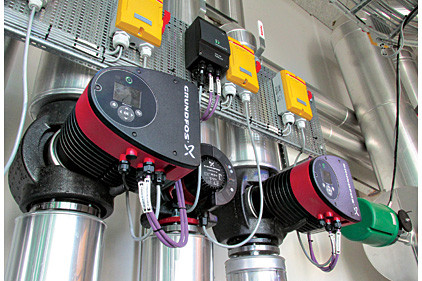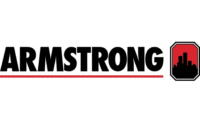New Grundfos President and CEO Mads Nipper is ready to construct a new era at the Danish company.
And he knows how to construct after 25 years working for LEGO, the children’s building-blocks toy company.
During an early October media tour of the company’s operations in Denmark and Hungary, Nipper – who joined the company four months ago – laid out a portion of his vision and said Grundfos is “a purpose-driven company.”
Grundfos has manufacturing operations throughout the world; Europe (nine plants), China (two plants), Asia Pacific (two plants) and North America (two plants, Kansas City, Kan., and Fresno, Calif., 900 employees). In 2013, North American sales totaled $400 million and Grundfos hopes to reach $1 billion in sales by 2020. The United States accounts for 85% of total North American sales, 10% come from Canada and Mexico sales total 5%.
Jorgen Bjelskou, Grundfos’ global public affairs director, noted that a study showed 10% of the world’s energy use comes from pumps. Grundfos’ goal is to reduce that number to 4% in the future. In 14 years since the release of its first small circulator, the Magna, Grundfos has reduced the energy its uses by 83%.
“We could reduce to 4% overnight if we replaced all outdated pumps to energy-efficient pumps,” he said.
Bjelskou added Grundfos is involved on the policymaking side of the industry and hopes to bring the accomplishments made in Europe to the United States. For example, in 2006 circulators in the European Union released 26 million tons of CO² into the air, but by 2020 it will be reduced to 11 million tons.
“We are working with the U.S. Department of Energy,” Bjelskou said. “In addition, we’re going to replace the 25 most ineffective pumps in the country.”
Grundfos Business Development Manager Hans Brink Hansen said during another presentation that the goal is to create smarter buildings. Hansen has visited many commercial buildings (he’s made 15 to 20 trips to the United States) and said the biggest problem to underperforming buildings is the pumps are oversized. He added building owners can take advantage of Grundfos’ audit program to ensure the building is sized correctly.
“Sizing of the pumps is critical,” Hansen said. “(Building owners) need to understand the use of their buildings.”
Innovative work at home
Grundfos showcased some of the innovative applications and projects the company is involved with in its home base of Denmark.
In the basement of the Crowne Plaza Towers in Copenhagen, there is a top-of-the-line Aquafer Thermal Energy Storage (ATES) system that uses cold groundwater for cooling hotel rooms in the summer and the heat that is rejected is stored and utilized for heating rooms in the winter.
The hotel, named “the greenest hotel in the world” with Skål International’s EcoTourism Award in 2010, uses Grundfos’ TPE in-line pumps with built-in frequency converters that allow the pumps to adapt to variations in flow needs. The building’s annual energy consumption is 51 kWh per square meter. That covers heating, air conditioning, domestic hot water and ventilation. The ATES has a projected payback time of six to seven years.
In Bjerringbro, more than 200 miles northwest from Copenhagen, sits one of Grundfos’ manufacturing plants. The company and the town created a collaborative project – the Bjerringbro Heating Plant.
The plant takes groundwater to produce heating for the city and cooling for the Grundfos campus. The system is in its third season of operation and saved Grundfos $500,000 in cost, according to company officials.
“Both partners are very happy,” said Klaus E. Christensen, a senior environment engineer for Grundfos.


